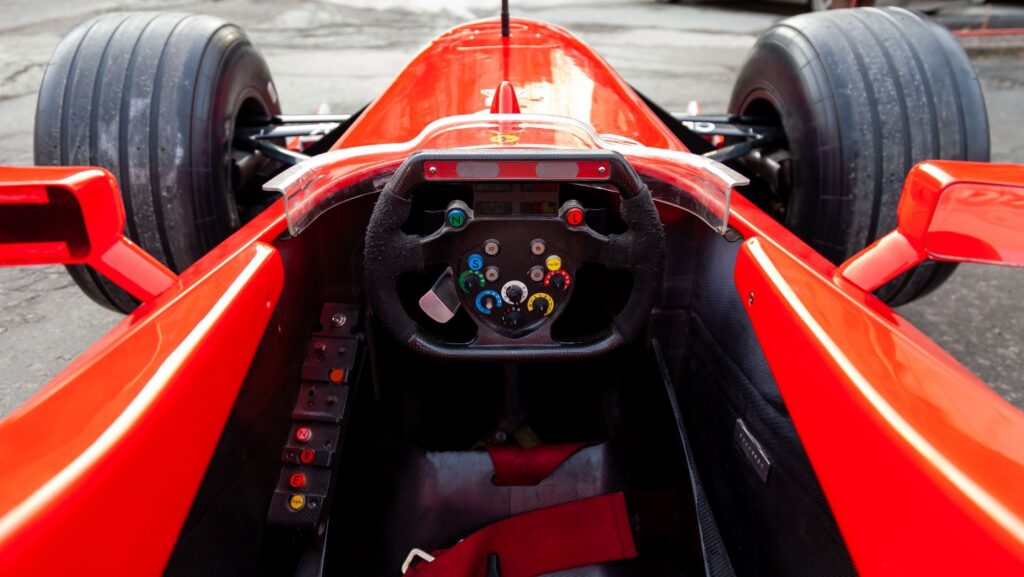The Evolution of Formula 1 Steering Wheel
Formula 1 Steering Wheel
The evolution of Formula 1 steering wheels showcases a remarkable journey of technological advancements in the realm of high-speed racing. From simple wheel designs of the past to the sophisticated control centers seen in modern racing cars, Formula 1 steering wheels have undergone significant transformations to cater to the demands of drivers and the complexities of the sport.
Key developments in the evolution of Formula 1 steering wheels include:
- Analog to Digital Transition: Initially, Formula 1 steering wheels featured basic functionalities like steering control and gear shifting. However, with technological progress, analog gauges and simple switches gave way to digital displays, multifunctional buttons, and advanced telemetry systems.
- Integration of Advanced Controls: Modern Formula 1 steering wheels serve as command hubs for drivers, incorporating a plethora of controls for adjusting settings such as engine mapping, differential settings, and brake balance. These controls enable drivers to fine-tune performance on the fly, optimizing their racing strategy.
- Enhanced Driver Communication: Communication systems integrated into steering wheels allow real-time interaction between drivers and their teams. Features like radio transmissions, lap time displays, and critical notifications enhance situational awareness and enable quick decision-making during races.
- Focus on Ergonomics and Weight Reduction: Recent advancements in steering wheel design emphasize ergonomic considerations to ensure driver comfort and minimize fatigue during races. Additionally, efforts to reduce weight through materials innovation contribute to enhancing overall vehicle performance.
- Customization and Personalization: Formula 1 teams often customize steering wheels to meet the preferences and driving styles of individual drivers. Tailoring button layouts, grips, and functions to suit specific requirements enhances driver confidence and performance on the track.

Key Components of Modern Formula 1 Steering Wheels
In modern Formula 1 racing, steering wheels have evolved into intricate control units packed with advanced technology. These high-tech components are crucial for drivers to navigate the complexities of the race and communicate effectively with their teams. Here are the key components found on modern Formula 1 steering wheels:
- Digital Display: Modern Formula 1 steering wheels feature high-resolution digital displays that provide real-time data to the drivers. This display shows essential information such as engine parameters, speed, gear position, lap times, and even messages from the team.
- Multifunctional Buttons: The steering wheels are equipped with multifunctional buttons that allow drivers to make quick adjustments while racing. These buttons control settings such as brake bias, differential, engine modes, and even radio communication with the pit crew.
- Rotary Switches: Rotary switches are commonly found on Formula 1 steering wheels, enabling drivers to fine-tune various parameters on the car. They can adjust things like fuel mixture, traction control settings, and even the deployment of energy recovery systems.
- Clutch Paddles: In modern Formula 1 cars, the clutch is operated electronically via paddles on the steering wheel. These paddles are crucial for smooth gear changes and launching the car from a standstill.
- Quick Release Mechanism: Formula 1 steering wheels are designed with a quick-release mechanism for easy removal. This feature allows drivers to quickly exit the car in case of an emergency or during pit stops.

Future Trends in Formula 1 Steering Wheel Design
Innovations in Formula 1 steering wheel design continue to push the boundaries of technology and performance. Teams are constantly striving to increase efficiency, enhance communication, and optimize driver control through cutting-edge features. Here’s a glimpse into the future of steering wheel design in Formula 1:
- Enhanced Communication Systems
- Teams are exploring the integration of advanced communication systems within steering wheels to streamline data exchange between drivers and engineers in real-time.
- Intelligent Haptic Feedback
- Future steering wheels may incorporate intelligent haptic feedback mechanisms to provide drivers with tactile alerts and notifications, enhancing situational awareness during races.
- Augmented Reality Displays
- Augmented reality displays integrated into steering wheels could revolutionize how drivers receive critical information, offering interactive visuals and data overlays for enhanced decision-making.
- Biometric Sensors
- The integration of biometric sensors in steering wheels could monitor driver’s vital signs and performance metrics, allowing for personalized feedback and optimization of driving techniques.
- AI-Assisted Controls
- Formula 1 steering wheels of the future might feature AI-assisted controls that adapt to individual driving styles, providing predictive assistance and optimizing performance based on real-time data analysis.
These upcoming trends in Formula 1 steering wheel design underscore the relentless pursuit of innovation and performance optimization in one of the most technologically advanced racing series in the world.

